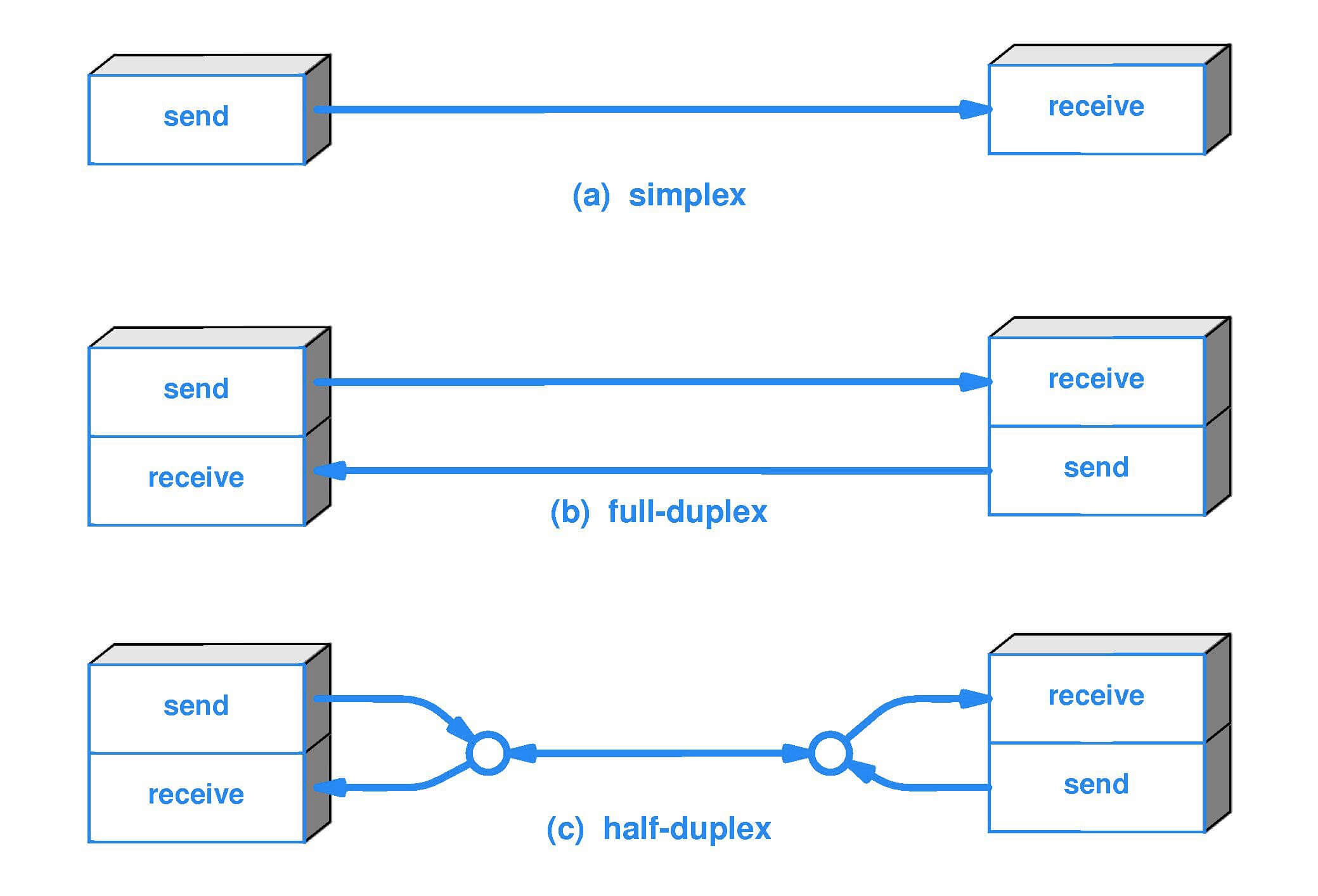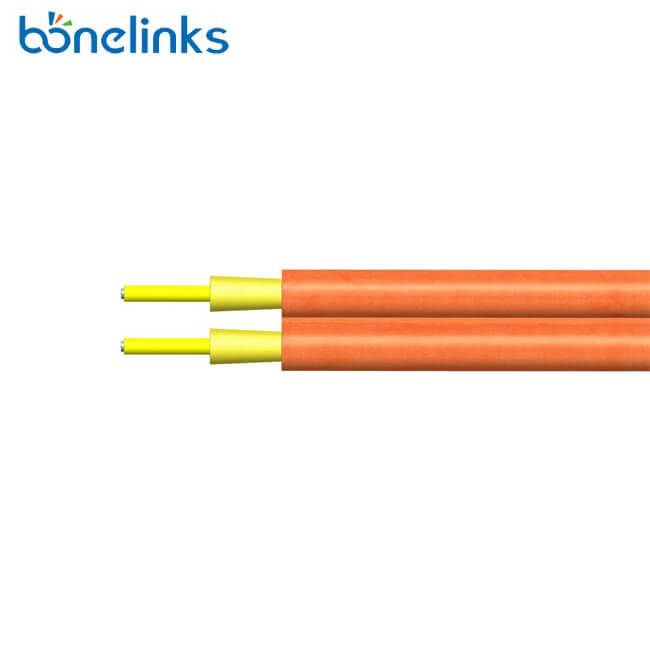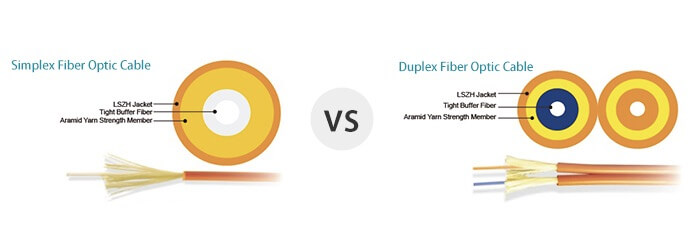According to the fiber core counts, fiber optic cable can be divided into simplex (single-core) fiber optic cable and duplex (double-core) fiber optic cable. This article will focus on the difference between simplex and duplex fiber optic cable.
What is Simplex?
Simplex is data transmission that only supports transmission in one direction. In simplex mode, the two ends of the communication, one end is the transmitter, and the other end is the receiver, which is not reversible. Simplex fiber is most often used for applications that only require one-way data transfer. Radio stations, for example, usually only send signals to viewers, and do not receive signals from viewers. Ananother example: An interstate trucking scale that sends the weight of the truck to a monitoring station or an oil line monitor that sends data about oil flow to a central location.
What is Duplex?
Duplex means that two-way information transmission can be carried out on the signal carrier, and data is received while sending data, requiring the sending end and receiving end to have independent receiving and sending capabilities at the same time. Duplex fiber is most often used for applications that require simultaneous and bi-directional data transfer.

Types of Duplex
Duplex is divided into half duplex and full duplex.
Half-duplex is the ability to transmit data in both directions on a signal carrier, but not simultaneously. In the communication process, the transmitter and receiver at both ends of the communication system can switch the direction through the receiving/sending switch to realize the transmission in a single direction. It can also be said that the half-duplex mode is a simplex communication that can switch directions. For example, on a walkie-talkie, when you press the call button, you can send a conversation to the other party, and the other party can also hear it, but the other party cannot talk to you at the same time.
Full-duplex is capable of bidirectional data transmission in both directions of the signal carrier at the same time, receiving data while sending data, requiring the sending end and receiving end to have independent receiving and sending capabilities at the same time. Full-duplex mode can also be seen as simplex communication that allows simultaneous transmission in both directions. Just like a telephone, both parties can talk at the same time because of the use of two-way instant transmission technology.
Simplex VS Duplex Fiber Optic Cable: What is the difference?
Simplex and duplex fiber patch cables feature two different types of communication channels in the fiber optic network. Now that we understand the definitions of simplex and duplex, let’s learn more about the main differences between simplex and duplex fiber optic cable.
- Structure
Simplex fiber optic cable consists of a single strand of glass-plastic fiber and an outer jacket. A duplex cable consists of two strands of glass or plastic optical fiber, which can be thought of as two simplex cables whose jackets are joined together by a strip of jacket material, usually in the form of a zipper. Both simplex and duplex fiber optic cables consist of tight-buffered fiber, aramid yarn, and sheath.

- Cost
Simplex fiber optic cables use only a single fiber for unidirectional transmission, while duplex fiber optic cables use a pair of fibers for bidirectional transmission. Under the same attributes, duplex uses twice as much material as simplex, so the price of duplex is twice that of simplex. - Speed
Simplex fiber optic cable offers higher speed than duplex fiber optic cable. Simplex utilizes the full capacity of the communication channel during data transmission. It has the least or no data traffic issues as data flows only in one direction. The capacity of the duplex communication channel is divided into two parts. Also, no dedicated path exists for data transfer. It has improper channel bandwidth utilization as there exist two separate paths for two communicating devices. - Application
Simplex fiber optic cable provides unidirectional data transmission. It is suitable for those transmissions when there is a requirement for full bandwidth for delivering data. Simplex fiber optic cable is a good choice for applications that only require sending information in one direction, such as digital data readout, interstate sensor relays, automatic speed, boundary sensors, oil line monitors, fiber optic pigtails, fiber optic patch cords and indoor applications.
Duplex fiber optic cable provides bi-directional data transmission. It is suitable for those transmissions when there is a requirement of sending data in both directions. Duplex fiber optic cable is ideal for bi directional data transfer applications such as telecom, workstations, Ethernet switches, fiber optic patch cords, pigtails, fiber optic modems, fiber optic switches and servers, and indoor applications.
Similarity
Both simplex and duplex fiber optic cables have single-mode and multimode. Single-mode fiber cable is generally better for long-distance applications because it can only carry one beam of light at a time. Multimode fiber has a larger core diameter and can transmit more data in a given amount of time. However, it is better suited for shorter distances due to high dispersion and attenuation rates.
Simplex VS Duplex Fiber Optic Cable: How to choose?
After knowing the difference between simplex and duplex fiber optic cables, you know how to choose. One of the most important principles is to choose according to needs. Simplex fiber cable is used when data transmission only needs to be transmitted in one direction, and duplex fiber cable is used in scenarios where two-way transmission is required.

Summary
Simplex and duplex are two modes of communication channels. Each of them can be deployed for different applications. Bonelinks specializes in simplex and duplex fiber optic cable products for the global market. Our simplex fiber optic cables and duplex fiber optic cables are available with high quality tight or loose tubes, aramid yarn strength members and jackets, soft and easy to strip, easy installation and simple operation. Contact us ([email protected]) if you have any needs.




